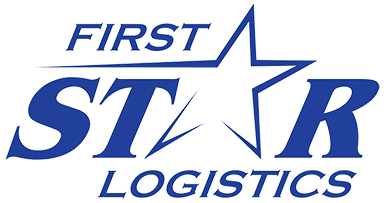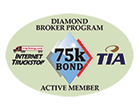As a freight broker, you connect shippers and carriers, but how do you make that happen? How do you take your freight broker business from idea to reality? This guide highlights why a freight broker business plan is essential, how to create one, and how to join a supportive and successful freight brokerage team.
What is a freight broker business plan?
A freight broker business plan is a living document that guides your company. It drives strategic growth and should evolve over time as your business develops. The document Typically provides a snapshot of your business, outlines future growth objectives, and Explains how you intend to reach your business goals.
Why is a freight broker business plan important?
Here are the top three reasons why a freight broker business plan is important:
- A business plan is required if you seek funding from a bank or investor.
- A business plan Improves the likelihood of success.
- A business plan Builds confidence that you can successfully and professionally operate your freight business.
How To Create an Effective Freight Broker Business Plan
Here are the elements of a strong freight broker business plan.
1. Executive Summary
The executive summary highlights the critical information from the following sections and is often written last. The goal of the executive summary is to engage the reader with a compelling snapshot of each section. It Helps readers quickly understand what your company does, who runs it, what the customer base is, why the business will succeed, and the current status of your financial situation.
2. Company Overview with Leadership Information
This section includes a Company description. Establish whether you broker local, international, or national shipping. State whether you are operating on the agent model, asset-based model, or 3PL. Provide the company background, like when and why you started the business and the milestones you have achieved thus far. Consider including data like the number of customers served, number of positive reviews, number of long-term contracts, or other relevant information. Additionally, introduce the company leaders and explain how their experience prepared them for the roles they hold.
3. Industry Analysis
This section examines the freight broker industry as a whole. Describe the current trends, relevant market factors affecting the industry, the financial status of the market, and any pertinent data and details that connect the information to freight brokerage specifically. Creating this section will educate you and the reader, help you improve your strategy, and show the reader you are an expert in the industry.
4. Customer Analysis
Examine the demographics of your target market and coverage area. Describe the size and composition of the coverage area. Discuss the volume of freight that goes in and out of the coverage area and provide insight into customer segmentation. Are you targeting small businesses or large businesses? What about fleet sizes? Define the customers you plan to serve and give a psychographic profile of customers that explains their wants and needs. After all, the more you can understand and define these things, the better you will be able to attract and retain customers.
5. Competitive Analysis
Every company has competition. In this section, provide insights into your direct and indirect competitors. Direct competitors are other freight brokerage businesses, and indirect competitors are other options for similar services. Highlight their strengths and weaknesses and document areas of your competitive advantage.
6. Marketing and Sales Strategy
In this section, you need to define your company’s unique value proposition. Explain your core services and discuss essential factors like top customer service, affordable pricing, niche expertise, etc. After reading this section, readers should be able to clearly understand how your company is set apart from the competitors and how you intend to communicate your value proposition to your audience.
7. Operations Strategy
This section covers your everyday short-term processes and long-term goals. Discuss functional roles like the number of people you intend to hire and their job responsibilities. If you run the entire operation, focus entirely on your duties and activities. Additionally, plan to detail several upcoming milestones. These can include goals like training and hiring staff, building out the facility, and other significant steps for your company.
8. Financial Strategy
In this section, you provide a breakdown of your revenue streams and expenses. Define key assumptions like the number of loads you expect to ship each year for the next five years and what fixed costs you expect to pay, like an office lease, bond fees, etc. If you are seeking funding, explain how much you need and how it will be spent.
9. Description of Services
This is an optional section that is only necessary if you need to show your business plan to stakeholders who are not familiar with freight brokerage. If you do include this section, use it to explain and define the services you provide.
10. Appendix
In this final section, you can include full financial projections and other supporting documents to make your plan more compelling to readers. Consider including completed contracts and other collateral that outlines your success.
Freight Broker Jobs with First Star Logistics
First Star Logistics is a unique asset-based global brokerage company with over 60 years of experience. We are looking to expand our brokerage department by hiring enthusiastic individuals wanting a fast-paced career in the logistics industry. We empower you to succeed by allowing you to create your goals and networks and make your own money. Our freight broker training program will enable you to start as a trainee or an experienced broker. Our talented freight brokers enjoy the highest commissions in the industry, weekly pay, proprietary software, a potential sign-on bonus with book of business, 24/7 agent support so you can be as productive as possible, and more customer saturation. To join the First Star team, apply today.



